Hilltop Home Cut into Steep Stone Slope
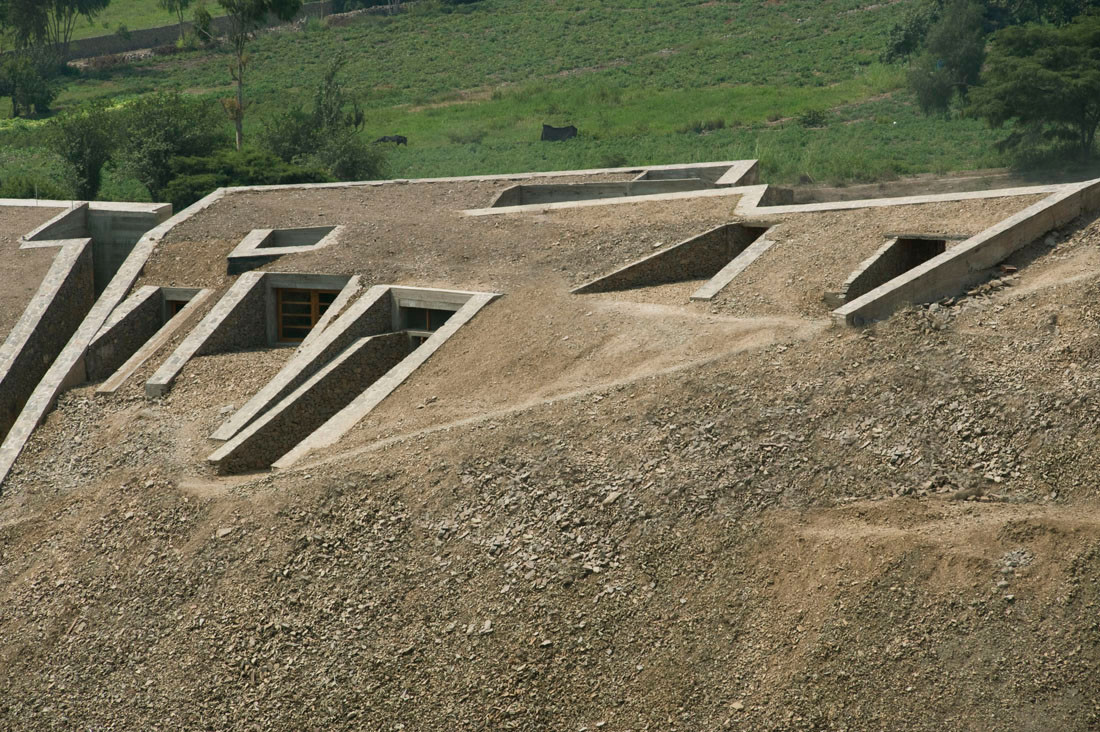
This is not your typical retirement home. Built for a retiring pair of philosophers transitioning from their daily intellectual grind to comfortable country living, this house rocks in an entirely more extraordinary way than a rocking chair ever could.
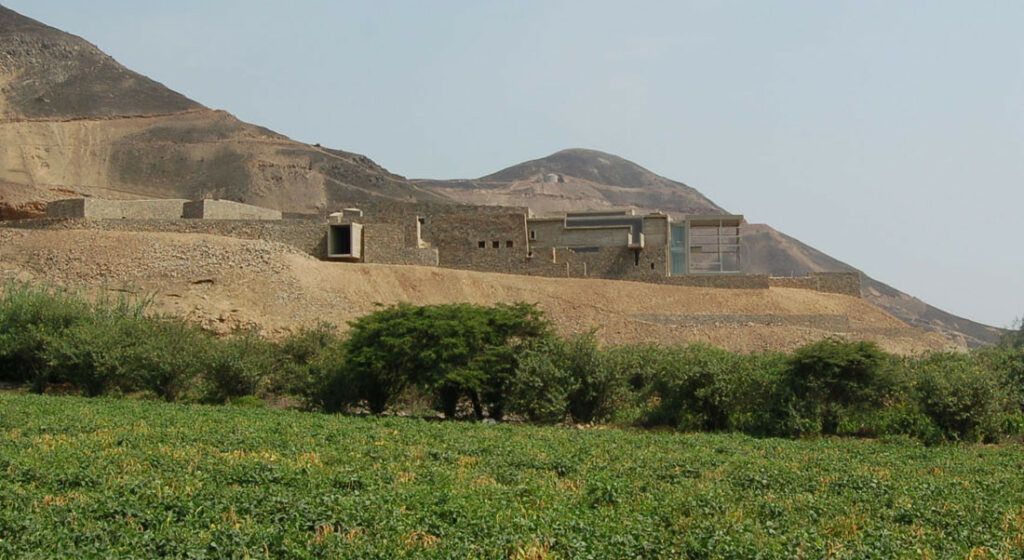
Boasting over ten thousand square feet of living space, you would never guess from afar just how much this maze-like dwelling extends into the slope around it. The structure sits beneath the surface of the earth not only as a nod to the aesthetic environment, but also as a sustainable response to the need for natural shade in the hot desert-caliber sun of summers in Peru.
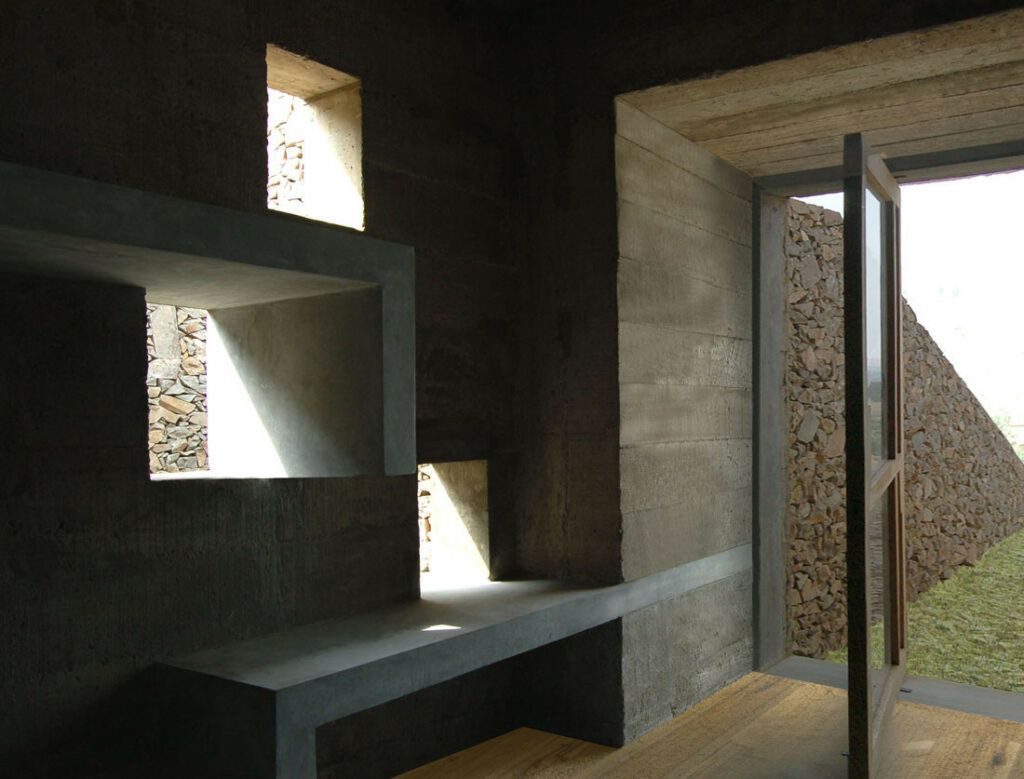

Clean contemporary spaces cut through the rural rustic surroundings. Local, smoothed and polished stones tie the building to its landscape. If it were not for the angular construction, one could almost mistake the exterior openings for natural cave formations – or ancient human-carved crypts, underground tunnels, perhaps even an exciting archeological excavation rather than an architectural creation. Inside, they do feel rather like caves, but decidedly more angular than you’d expect.
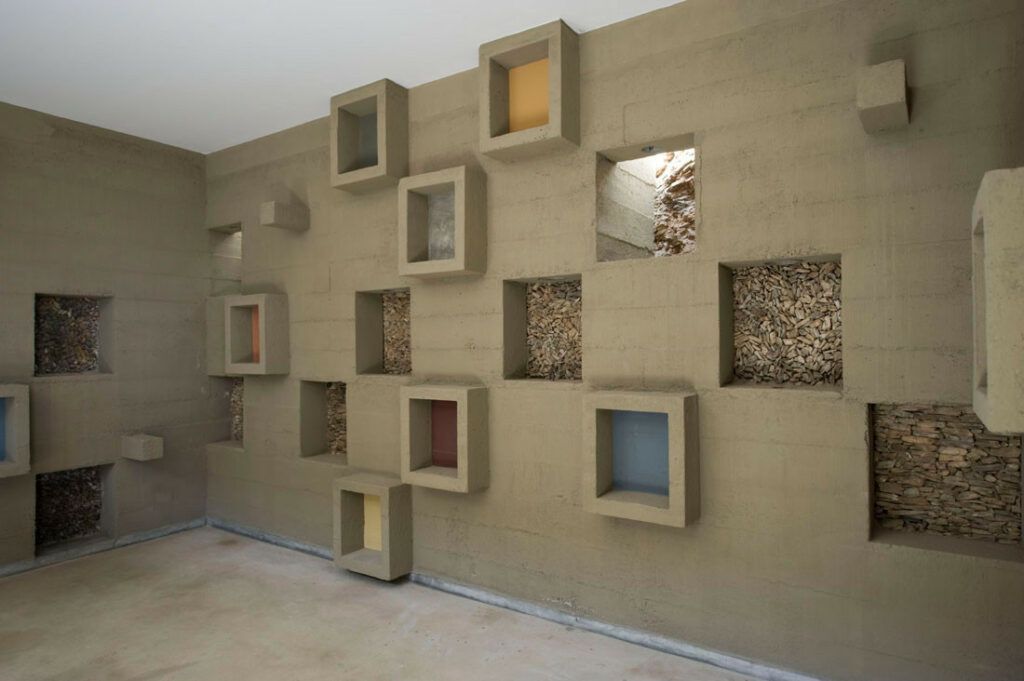
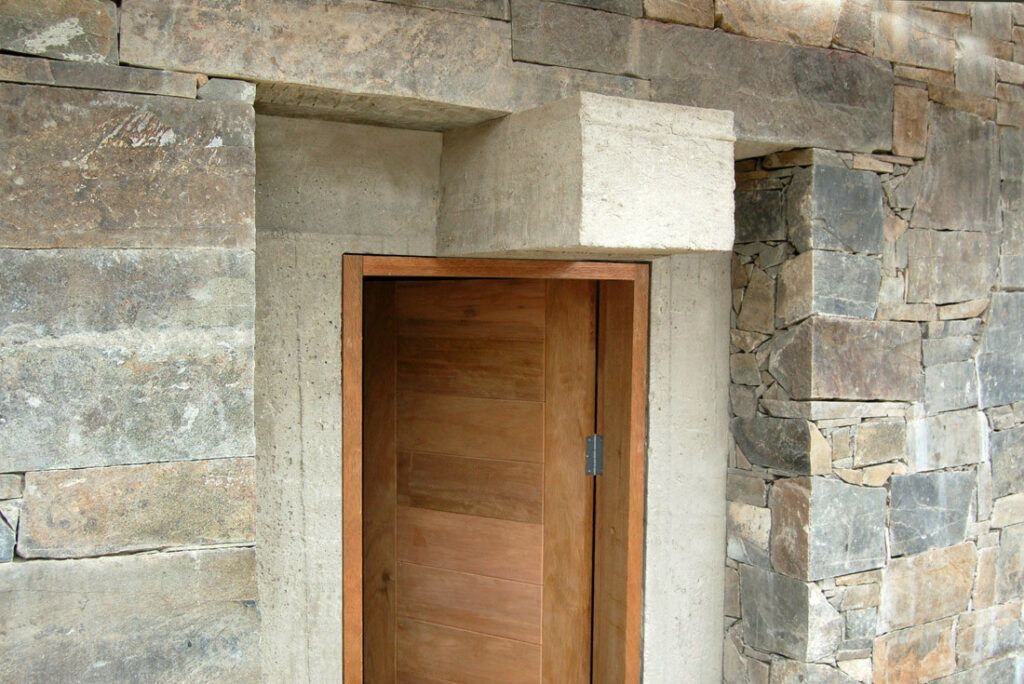
Longhi Architects carried the austere and linear look of the outside to the interior spaces as well, filling the halls with stone walls and box-like rock shelving – even the dining room table is a huge singular stone set into the center of a communal eating and living space.
“A hill in Pachacamac, located 40 km south of Lima near Peru’s coast, is the site for the retirement home of a philosopher. The response to the site’s conditions was to bury the house, trying to create a balanced dialogue between architecture and landscape, where inside / outside becomes a constant interpretation of materiality with strong sense of protection and appreciation of the dark and the light. A glass box sticks out of the hill symbolizing architectural intervention on untouched nature.”




